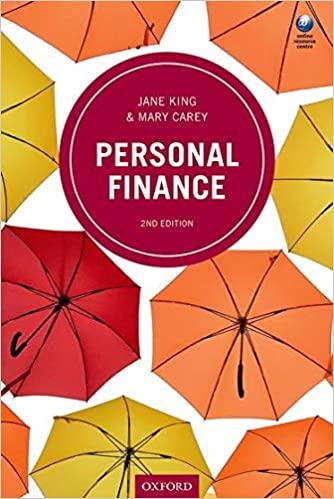Answered step by step
Verified Expert Solution
Question
1 Approved Answer
u(x)=1000(1+ 1000 proposes to insure the firm. If the price of the insurance product is c, the insurer would receive c with probability 1-p, and

u(x)=1000(1+ 1000 proposes to insure the firm. If the price of the insurance product is c, the insurer would receive c with probability 1-p, and C-1000 with probability p. (Hint: compute the probabilities with at least four digits). Answer the questions from (a) to (e). (a) Write the expected utility of the insurer as a function of c. Show that the insurer does not accept to insure when c = 80. Interpret your result. (b) Show that the insurer accepts with c = 80 if the probability of loss is lower, at p = 0.01. What is the highest probability the insurer can accept when c = 80? (C) Suppose that the loss in case of a disaster is 250 instead of 1000. Show that the insurer accepts the deal when c = 20. Explain your result in the light of the risk-spreading result. (d) What is the highest probability the insurer can accept when the loss is 250 and c = 20? How does the answer illustrate the risk-spreading result? (e) Suppose the firm cannot pay more than P in total to cover the loss of 1000. There are n identical insurers that can equally share the risk and equally share P between them. Write the expected utility of a single insurer as a function of n and P. Show that it is not possible to find enough insurers to insure the risk if P
Step by Step Solution
There are 3 Steps involved in it
Step: 1

Get Instant Access to Expert-Tailored Solutions
See step-by-step solutions with expert insights and AI powered tools for academic success
Step: 2

Step: 3

Ace Your Homework with AI
Get the answers you need in no time with our AI-driven, step-by-step assistance
Get Started


